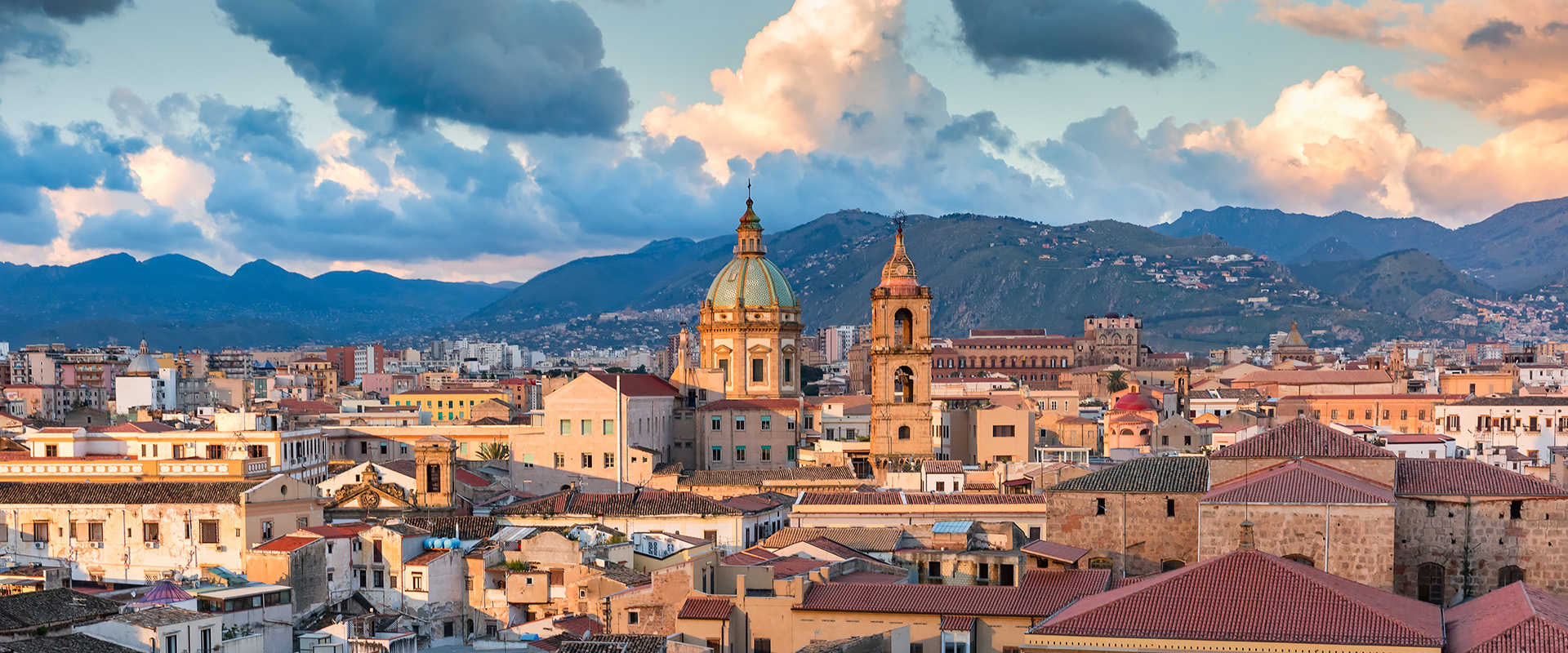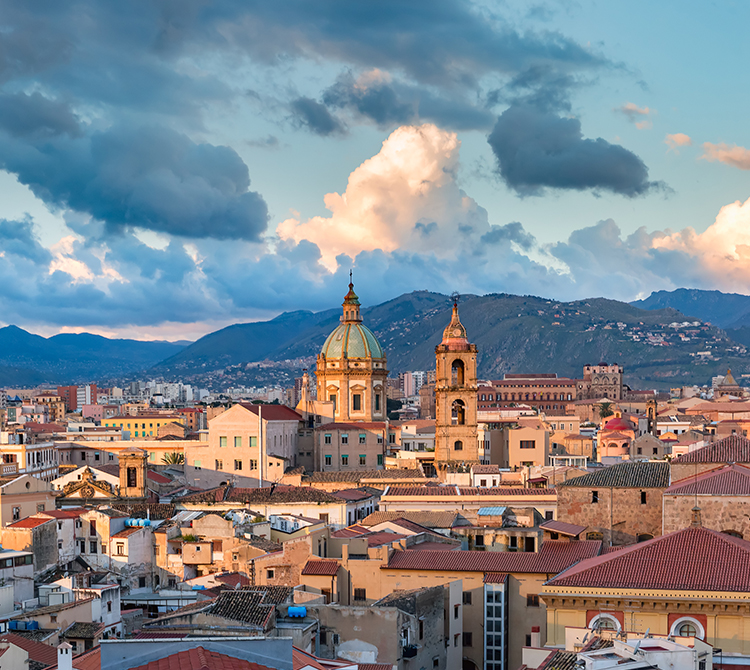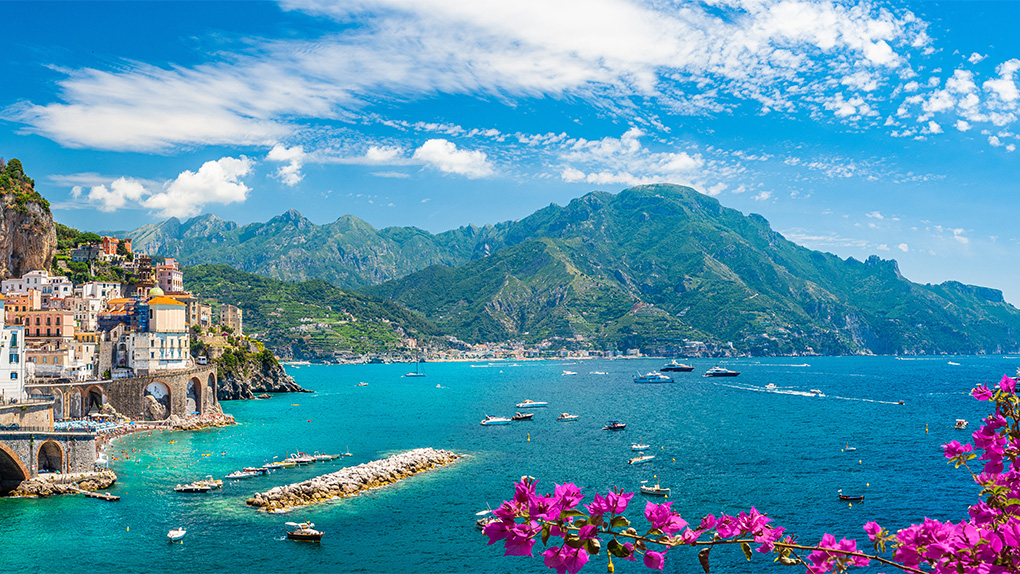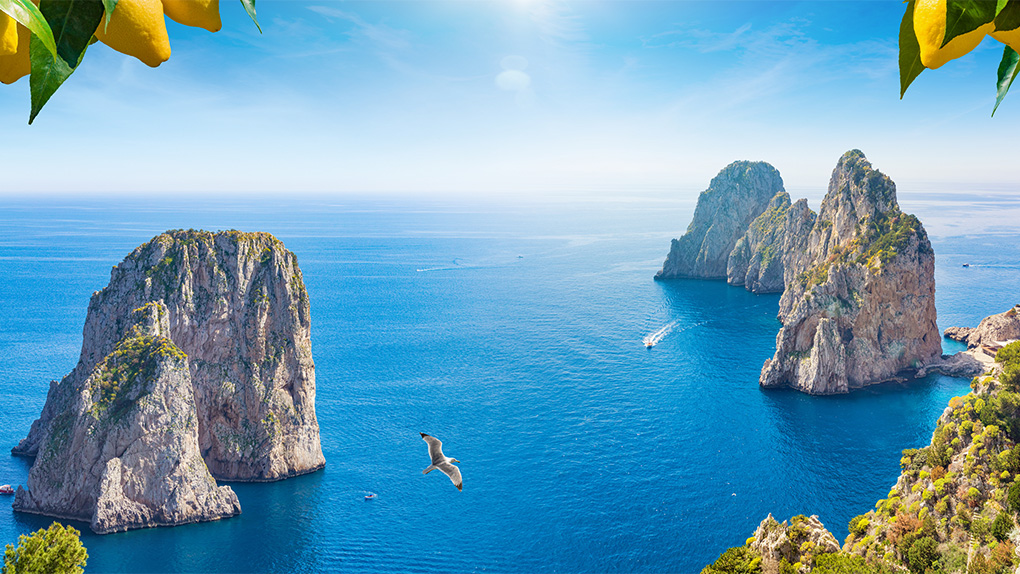From Moorish architecture to grand cathedrals, passing by street markets and stunning natural beauties, here are 10 things to see when you visit Palermo.
Palermo, the capital of Sicily is the perfect place to begin an exploration of the island. A melting pot of cultures, from Norman to Moorish passing by Spanish and Ancient Greek, Sicily is one of the most picturesque and diverse regions of Italy. The stunning natural beauty, as well as the architecture and delicious food will charm any tourist. One visit to Sicily alone is not enough, but when you do visit, make sure to start from Palermo.
Here are 10 things to see when you visit the Capital of Sicily.
The Mosaics
The Norman heritage of Sicily is closely reflected in the stunning mosaics of The Palatine Chapel, and the Monreale Cathedral. The Palatine Chapel, dedicated to Saint Peter, is situated in the Royal Palace and was commissioned by Roger II in 1132 in the style of classic Byzantine architecture and thus presenting some of the most incredible mosaics found in Italy. A short drive out of the centre of Palermo will afford a visit to the Monreale Cathedral. Begun in 1174 by William II, the cathedral is a curious mix of Norman-French, Byzantine and Arab artistic styles, and boasts the largest concentration of Byzantine mosaics in Italy, a total of 6,500 metres square.
The street Markets
The most famous Palermo market is the Vucciria. In the local dialect, Vucciria means “voices” or “hubbub” which is certainly one way to find the market – just listen out for the noise as everyone haggles back and forth! It flows through the side streets around Piazza San Domenico. Though the Mercato del Capo market sells a variety of goods, locals bypass them in favor of the food. In a concentrated section on the Via Volturno, street vendors have all the local delicacies. The Ballarò Market, located in the streets around Piazza Carmine, combines two Italian excellences: food and clothes. Primarily a food market, the Ballarò market is a street eaters delight, but it is also home to large numbers of clothes sellers, making vintage clothes shopping a must.

Palermo Cathedral and the Altar dedicated to Santa Rosalia
The Palermo Cathedral is a giant complex in the centre of the city which presents a number of different architectural styles. From Franco Norman, to Byzantine, as well as Baroque and Neoclassical, and even some elements of Moorish architecture. The Cathedral has evolved along with the city, and its final restoration, dates back to the 18th century. Within the Cathedral as an architectural complex, it is characterized by the presence of different styles, due to a long history of additions, alterations and restorations, the last of which occurred in the 18th century. Within the Cathedral is the silver guilt altar dedicated to Santa Rosalia, the noble Norman young woman who became the Patron Saint of the City, and supposedly saved Palermo from the outbreak of plague in 1624. The saint is celebrated twice in the year, on the 14th July within Palermo and later on the 4th September when the devotees embark on a pilgrimage to Mount Pellegrino.

Cannoli, Cassata, Granita…
Sicily’s gastronomic heritage is almost alone reason enough to visit the region. When in Palermo, make sure to sample all the goodies, including granita (at breakfast), or aubergine based dishes like the caponata and pasta alla norma, street food like arancini and sfincione (a pizza like delicacy), and then of course Sicilian cannoli and cassata. Sicily is also famed for Modica chocolate (make sure to pick some up) and the locally grown Bronte pistachios.
Quattro Canti
Officially known as Piazza Vigliena, the square of the Quattro Canti or Ottagono del Sole is a unique Baroque structure. The characteristic of this square is that the piazza is octagonal, four sides being the streets; the remaining four sides are Baroque buildings, the near-identical facades of which contain fountains with statues that represent the four seasons, the four Spanish kings of Sicily, and of the patronesses of Palermo (Cristina, Ninfa, Olivia and Agata – this was before 1624 when Santa Rosalia performed her miracles and thus joined the roster of Patrons of Palermo). When the piazza was built, it was one of the first major examples of town planning in Europe. When visiting Quattro Canti also make a detour to Piazza Pretoria, dominated by its eponymous fountain and the Church of San Giuseppe dei Teatini, one of the most outstanding examples of the Sicilian Baroque in Palermo.
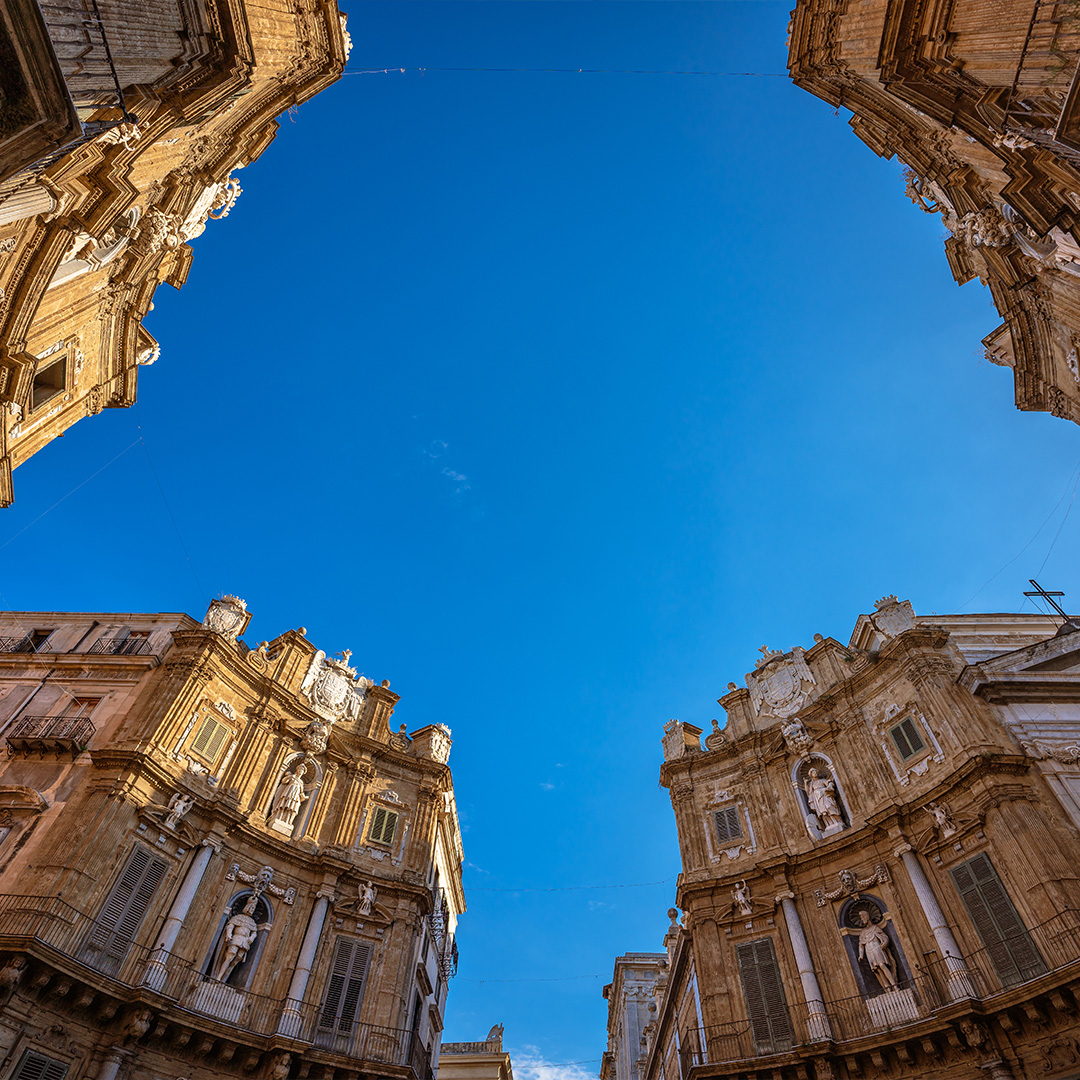
Teatro Opera dei Pupi
The historic Sicilian tradition of the marionette theatre, the Opera dei Pupi (Opera of the Puppets) began in the mid-nineteenth century. The “pupi”, were marionettes created to stage plays inspired by the great epic tales of chivalry. While in Palermo, make sure to visit the richest collection of at the Antonio Pasqualino International Puppet Museum, and other material can be found at the Giuseppe Pitre Sicilian Ethnographic Museum. If you have time get tickets for a performance at the Teatro dell’opera dei Pupi “Figli d’arte Cuticchio”, via Bara all’Olivella, Palermo.
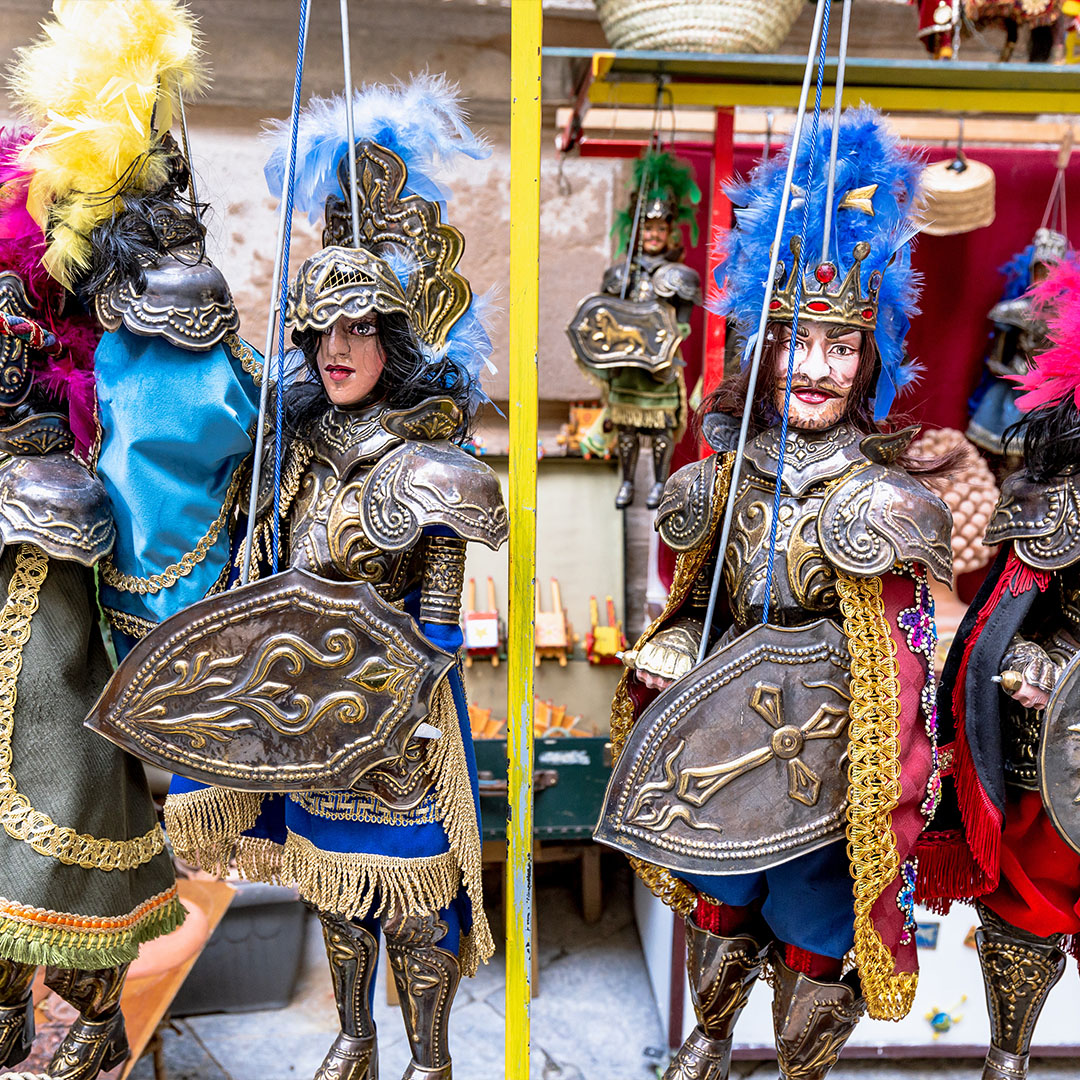
The Gardens
As any royal capital worth its name, has plenty of verdant spaces to delight its residents and visitors. Palermo boasts a few of these stunning gardens, with the Palermo Botanical Garden, being one of the most stunning, and the largest of its kind in Italy. Constructed in 1789 in a neoclassical style, today the garden is a tourist attraction and a research and educational institution of the Department of Botany of the University of Palermo. Another garden worth visiting is The Favorita Royal Park, which houses the legendary Palazzina (or Casina) Cinese. This prime example of Sicilian Chinoiserie dominates the grounds and was the summer residence of King Ferdinand I and Queen Maria Carolina.
The Arab Norman Itinerary
In 2015 the Arab-Norman itinerary in Palermo and the cathedrals of Cefalù and Monreale were officially added to the list of UNESCO World Heritage Sites, confirming the island as the Italian region with the highest numbers of such sites. When visiting Palermo the itinerary of historical and architectural importance is not to be missed and includes the Palazzo Reale (Royal Palace) with Cappella Palatina (Palatine Chapel), the Church of San Giovanni degli Eremiti (Saint John of the Hermits) the church of Santa Maria Dell’Ammiraglio (Saint Mary of the Admiral), the church of San Cataldo, the cathedral of Palermo, Palazzo della Zisa, Ponte dell’Ammiraglio (Admiral Bridge), the cathedral of Cefalù and that of Monreale.
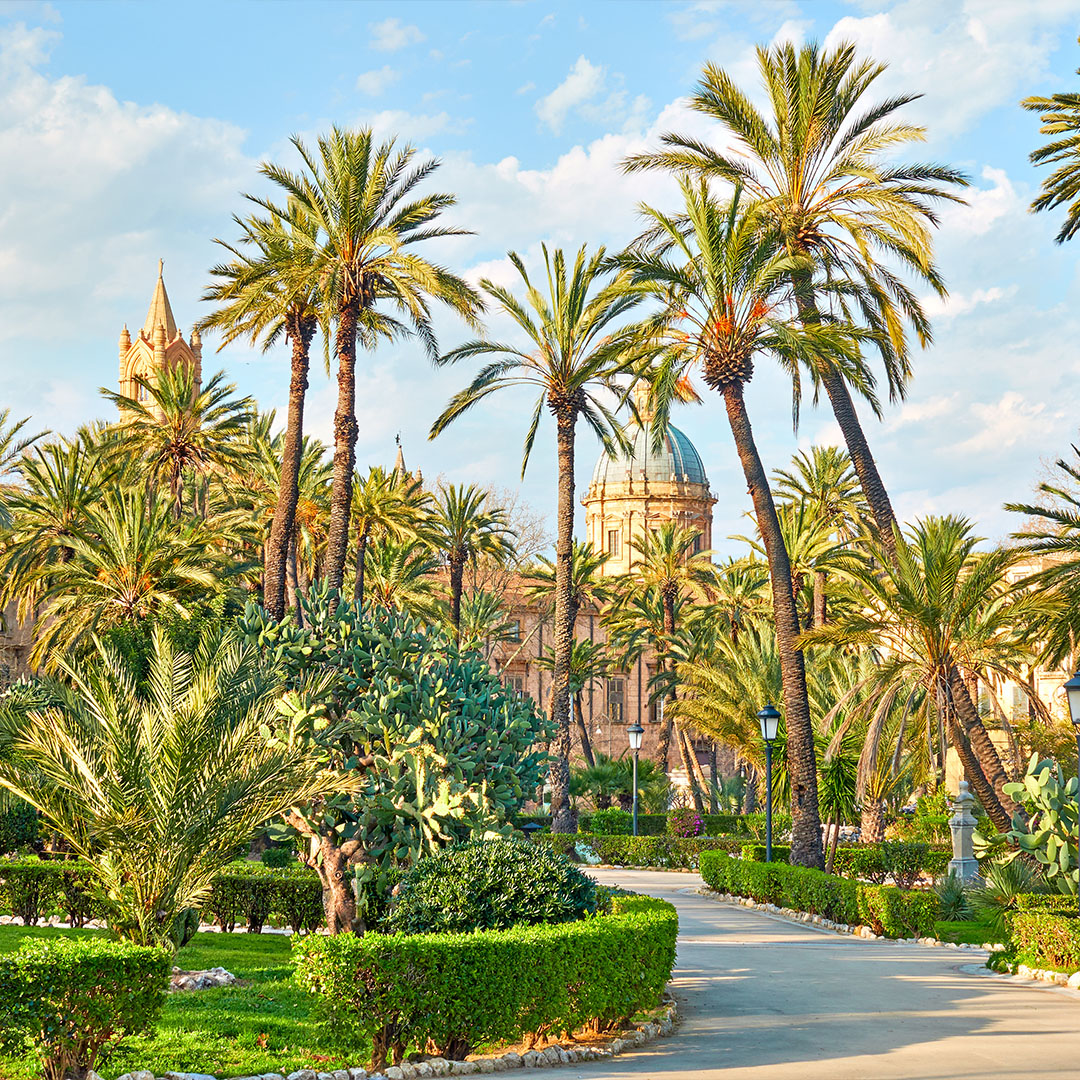
Riserva dello Zingaro
While in Sicily we recommend you do not miss out on some of the natural beauties the region has to offer. Just a short drive from Palermo, take a day trip to the Riserva naturale dello zingaro. The first natural reserve in Sicily, which dates back to May 1981, it stretches along about 7 kilometres of unspoilt coastline of the Gulf of Castellammare. Here you can enjoy some bird watching, mainly birds of prey, including the peregrine falcon, the common kestrel and the common buzzard, and the stunning sandy beaches lapped by the clear blue sea, and surrounded by the majestic mountains of the reserve.
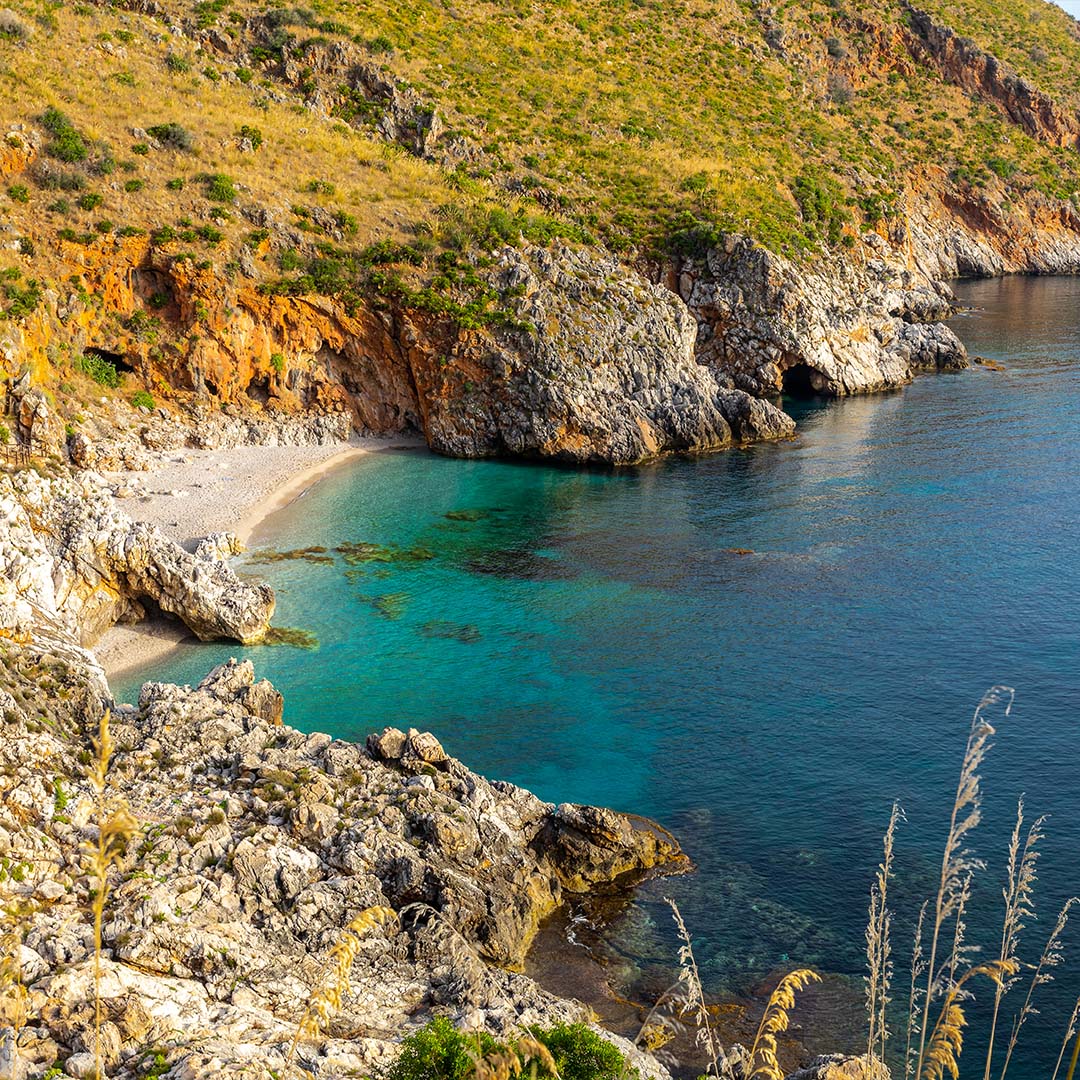
Teatro Massimo
Located in Piazza Verdi in Palermo, the Teatro Massimo Vittorio Emanuele, is the biggest opera house in Italy and one of the largest in Europe. It was built in 1864, in order to promote the unification of Italy which occurred in 1861. Realized in the late-Renaissance style, the auditorium was planned for 3,000 people, but, in its current format, it seats 1,350, with 7 tiers of boxes rising up around an inclined stage, and shaped in the typical horseshoe style. The Theatre was finally completed in May 1897, twenty-two years after the laying of the foundation stone, the third largest opera house—and was inaugurated with a performance of Verdi’s Falstaff conducted by Leopoldo Mugnone. On a pop culture note, the final scenes of the film The Godfather Part III were filmed at the theatre.


